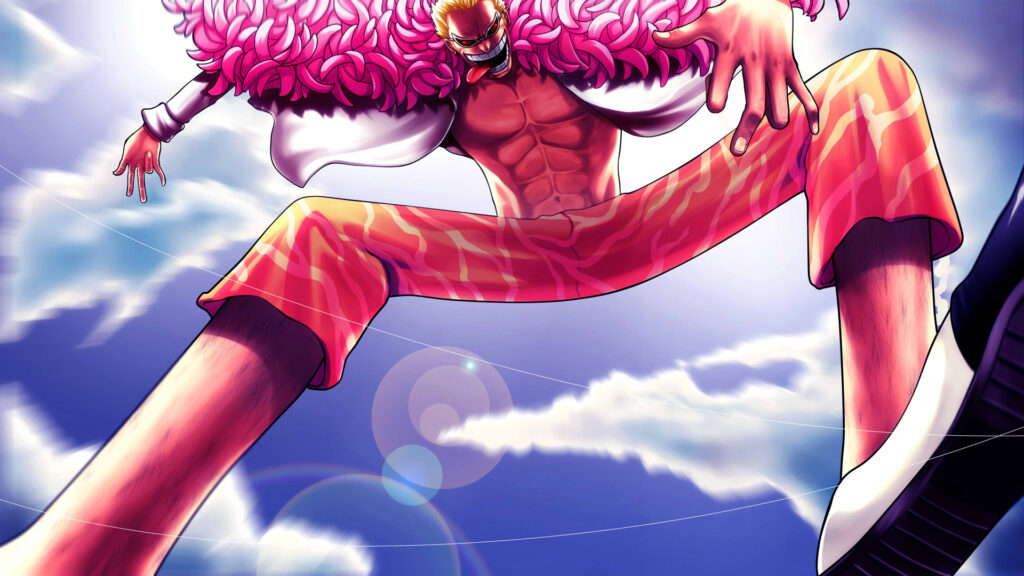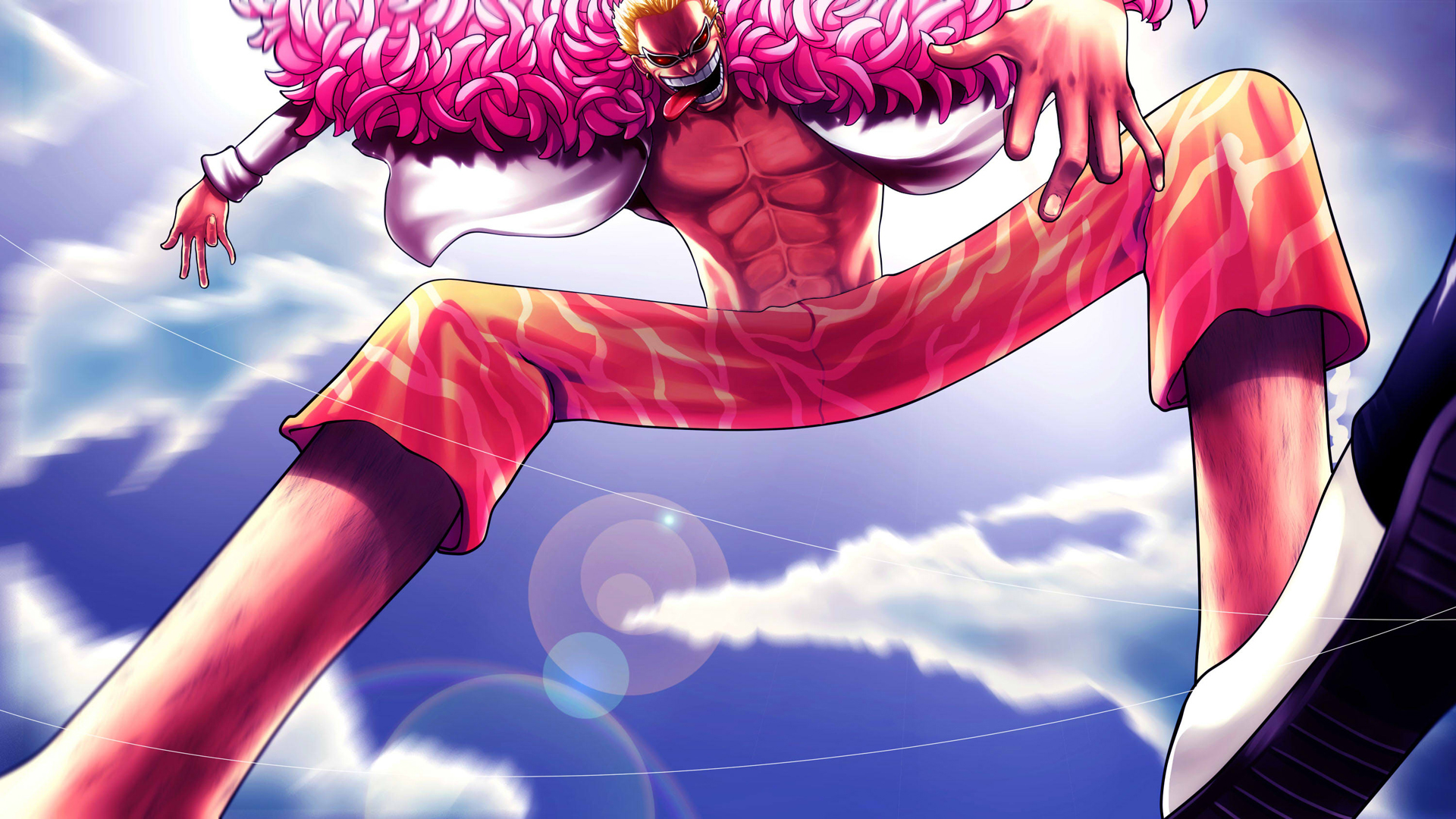
One Piece: Decoding the Enigmatic Donquixote Doflamingo
Donquixote Doflamingo, often simply referred to as Doflamingo, stands as one of the most compelling and complex antagonists in Eiichiro Oda’s sprawling manga and anime masterpiece, One Piece. More than just a powerful pirate, Doflamingo’s influence permeated the underworld, the World Government, and even entire nations. This article delves into the multifaceted character of Doflamingo, exploring his origins, motivations, powers, and ultimate downfall, examining why he remains such a captivating figure within the One Piece universe.
Doflamingo’s Royal Lineage and Tragic Upbringing
Born into the Donquixote Family, one of the twenty royal families who founded the World Government eight centuries prior, Doflamingo’s early life was steeped in privilege. However, his father, Donquixote Homing, renounced his Celestial Dragon status, choosing to live among ordinary people. This decision proved disastrous. The family faced extreme prejudice and hardship, ultimately leading to the tragic death of Doflamingo’s mother. Driven by grief and resentment, Doflamingo awakened his Conqueror’s Haki and murdered his own father, presenting his head to the World Government in a desperate attempt to regain his former status. This act, however, was rejected, solidifying Doflamingo’s hatred for both the Celestial Dragons and the common people he blamed for his suffering. This formative trauma significantly shaped Doflamingo’s worldview and fueled his ambition for revenge.
The Rise of the Joker: Doflamingo’s Underworld Empire
Rejected by the world, Doflamingo embraced the darkness. He gathered a powerful crew, including figures like Trebol, Diamante, Pica, and Vergo, and began building an empire of crime. Doflamingo became known as “Joker,” a powerful broker in the underworld, dealing in weapons, artificial Devil Fruits (SMILEs), and even war. His influence reached the highest echelons of the World Government, allowing him to operate with impunity for many years. He manipulated kingdoms, orchestrated conflicts, and profited from the suffering of others. The Dressrosa arc showcases the culmination of his manipulative tactics. He seized control of the kingdom, brainwashed its citizens, and forced the former king, Riku Dold III, into exile, all while maintaining a facade of benevolence. This reign of terror was built on lies and fear, highlighting Doflamingo’s ruthlessness and strategic brilliance.
Doflamingo’s Devil Fruit: The String-String Fruit (Ito Ito no Mi)
Doflamingo’s immense power stems from his mastery of the String-String Fruit (Ito Ito no Mi), a Paramecia-type Devil Fruit that allows him to create and manipulate strings. These strings are incredibly versatile, granting him a wide range of abilities. He can use them to control people like puppets, create clones of himself, repair internal organs, and even create a massive “Birdcage” that traps and decimates entire islands. His mastery of the String-String Fruit is so advanced that he has awakened its power, allowing him to transform his surroundings into strings. This awakened ability significantly enhances his offensive and defensive capabilities, making him a formidable opponent. The strings are also incredibly sharp, capable of slicing through steel and flesh with ease. Doflamingo’s creative application of his Devil Fruit is a testament to his intelligence and adaptability.
Doflamingo’s Crew and Allies
Doflamingo surrounded himself with a loyal and powerful crew, each member possessing unique abilities and serving a specific role within his organization. Vergo, a trusted confidant, infiltrated the Marines, providing Doflamingo with valuable intelligence and protection. Trebol, Diamante, and Pica served as executives within the Donquixote Pirates, each commanding a different division and possessing formidable combat skills. These individuals were fiercely loyal to Doflamingo, believing in his vision and contributing to his reign of terror. Beyond his immediate crew, Doflamingo also forged alliances with powerful figures in the underworld, further solidifying his influence and reach. His network of connections allowed him to operate with impunity and maintain his position as a key player in the global power struggle. The loyalty and capabilities of his crew were integral to Doflamingo’s success.
The Dressrosa Arc: Doflamingo’s Downfall
The Dressrosa arc marks the climax of Doflamingo’s reign and his ultimate defeat. The Straw Hat Pirates, led by Monkey D. Luffy, along with the Law, the rebel army and the citizens of Dressrosa, launched a full-scale assault on Doflamingo’s kingdom. Luffy’s determination to protect his friends and liberate Dressrosa from Doflamingo’s tyranny fueled his relentless pursuit. The battles against Doflamingo’s executives were intense and challenging, pushing the Straw Hats to their limits. Ultimately, Luffy confronted Doflamingo in a brutal and protracted battle. Luffy, using Gear Fourth, finally defeated Doflamingo, breaking his control over Dressrosa and exposing his crimes to the world. Doflamingo’s defeat had significant repercussions, disrupting the balance of power in the underworld and exposing the corruption within the World Government. The Dressrosa arc served as a turning point in the One Piece narrative, paving the way for future conflicts and revelations.
Doflamingo’s Impact on the One Piece World
Despite his defeat, Doflamingo’s influence continues to reverberate throughout the One Piece world. His actions exposed the dark underbelly of the World Government and the corruption that festers within its ranks. His knowledge of the national treasure of Mariejois, a secret that could shake the world to its core, makes him a valuable asset to those seeking to challenge the established order. [See also: The Secrets of Mariejois]. Doflamingo’s legacy serves as a cautionary tale about the dangers of unchecked power and the consequences of seeking revenge. His character remains a compelling and complex figure, prompting discussions about morality, justice, and the nature of good and evil. The ripple effects of his actions will undoubtedly continue to shape the events of One Piece as the story progresses. Doflamingo’s impact is far-reaching.
Analyzing Doflamingo’s Motivations
Understanding Doflamingo requires delving into the psychological complexities that drive his actions. His traumatic childhood, marked by the loss of his mother and the rejection by both the Celestial Dragons and the common people, instilled in him a deep-seated hatred and a desire for revenge. He views the world as a game, with himself as the ultimate player, manipulating others for his own amusement and gain. His obsession with power stems from a desire to control his own destiny and prevent others from experiencing the same suffering he endured. However, his methods are brutal and ruthless, justifying any means to achieve his ends. Doflamingo’s motivations are a twisted reflection of his past experiences, highlighting the destructive nature of trauma and the corrupting influence of power. He is a complex character. He is not simply a villain.
Doflamingo’s Lasting Legacy
Donquixote Doflamingo is more than just a villain; he is a symbol of the darkness that lurks beneath the surface of the One Piece world. His intricate schemes, immense power, and complex motivations have cemented his place as one of the most memorable and impactful characters in the series. Even imprisoned, his knowledge and influence remain a threat to the World Government. His story serves as a reminder that even those born into privilege can be consumed by darkness, and that the pursuit of power can lead to devastating consequences. Doflamingo’s legacy will continue to shape the narrative of One Piece for years to come, reminding us of the constant struggle between light and darkness that defines the series. He is a truly unforgettable antagonist. Doflamingo is a key figure.
Ultimately, the story of One Piece’s Doflamingo is a tragic one, filled with both brilliance and brutality. His rise and fall serve as a stark reminder of the corrupting influence of power and the enduring consequences of trauma. He remains a character that fans love to hate, and his impact on the One Piece world is undeniable. [See also: The Celestial Dragons: History and Influence]

